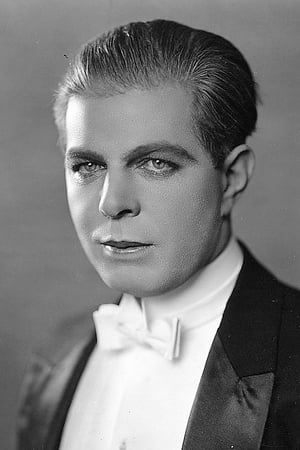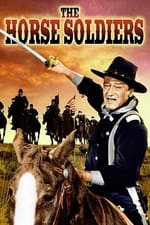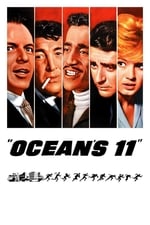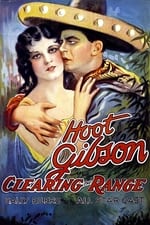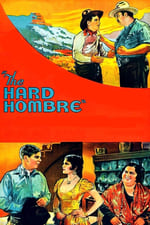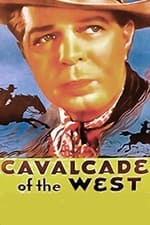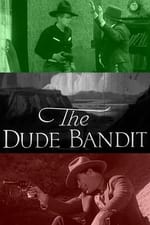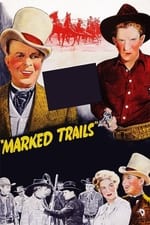Personal Info
Known For Acting
Known Credits 225
Gender Male
Birthday August 5, 1892
Day of Death August 23, 1962 (70 years old)
Place of Birth Tekamah, Nebraska, USA
Also Known As
- Edmund Richard Gibson
- Ed 'Hoot' Gibson
- Ed Hoot Gibson
- Edward 'Hoot' Gibson
- Edward Gibson
- Ed Gibson
- Hall Gibson
- Ed Hoot
- Edmund Richard "Hoot" Gibson
Content Score
100
Yes! Looking good!
Login to report an issue
Biography
Hoot Gibson was a colorful figure, a light-hearted, fun-loving personality on screen and off. Hoot’s cheerful westerns included a significant amount of comedy. His mild, peaceful character rarely carried a gun. As an expert horseman, Hoot was always impressive on a galloping horse. Gibson’s film career began in 1910 with a few films for the Biograph Company interspersed among rodeo competitions. In 1914 he was a stuntman for the serial The Hazards of Helen, doubling the serial’s star Helen Holmes. His stunts included fights on trains and transfers from a train to a horse. He had supporting roles in numerous Western short films, including playing the villain in A Knight of the Range (1916) opposite popular western star Harry Carey. He appeared in three of the Westerns made by Carey and director John Ford in 1917: Straight Shooting, The Secret Man, and A Marked Man. Hoot’s starring career at Universal Studios was launched in two films directed by Ford, Action (1921) and Sure Fire (1921). In these films, Hoot plays a wandering cowboy who rescues the pretty young co-star from outlaws.
Hoot became a popular western star for Universal. Film titles such as Ridin’ Wild (1922), Thrill Chaser (1923), Hit and Run (1924), Hurricane Kid (1925), and Galloping Fury (1927) guaranteed Hoot’s fans five reels of action and fun. Hoot’s easygoing approach gave his films a lighthearted tone. A deft comedian, he featured as much comedy as drama.
As talkies arrived, Hoot continued as a Western star, but with lower budget producers such as M.H. Hoffman Inc. (distributed on a state rights basis by Allied Pictures Corporation) and Walker Futter Productions (Diversion Pictures). In 1935, Hoot co-starred with Harry Carey in Powdersmoke Range, advertised by RKO as the "Barnum and Bailey of Westerns" (whatever that means). The cast list of this "all star" (B western stars) film included Bob Steele, Guinn "Big Boy" Williams, Tom Tyler, William Farnum, and other Westerners from the silent era. In 1937 at Republic, he made a serial, The Painted Stallion, in support of new cowboy star Ray Corrigan.
An aging Hoot retained his fine horsemanship and comic flair, but fan interest had moved to the new singing cowboys, especially Gene Autry and Roy Rogers. Hoot’s Westerns had lost their appeal. In the late thirties, out of movies, Hoot toured with circuses and appeared at rodeos and fairs.
In 1943, after seven years off the screen, Hoot returned in the Trail Blazer series at Monogram Studios. In these Westerns, Marshall Hoot Gibson, initially co-starred with Ken Maynard and later with Bob Steele and Chief Thundercloud, upholds the law and captures outlaws and crooked businessmen threatening the lives and property of innocent citizens. Hoot made eleven Trail Blazer films; the last was Trigger Law (1944). John Ford brought Hoot back for a cameo role in The Horse Soldiers (1959). His last screen appearance was as a sheriff’s deputy in Ocean’s Eleven (1960), another cameo.
Hoot Gibson was a colorful figure, a light-hearted, fun-loving personality on screen and off. Hoot’s cheerful westerns included a significant amount of comedy. His mild, peaceful character rarely carried a gun. As an expert horseman, Hoot was always impressive on a galloping horse. Gibson’s film career began in 1910 with a few films for the Biograph Company interspersed among rodeo competitions. In 1914 he was a stuntman for the serial The Hazards of Helen, doubling the serial’s star Helen Holmes. His stunts included fights on trains and transfers from a train to a horse. He had supporting roles in numerous Western short films, including playing the villain in A Knight of the Range (1916) opposite popular western star Harry Carey. He appeared in three of the Westerns made by Carey and director John Ford in 1917: Straight Shooting, The Secret Man, and A Marked Man. Hoot’s starring career at Universal Studios was launched in two films directed by Ford, Action (1921) and Sure Fire (1921). In these films, Hoot plays a wandering cowboy who rescues the pretty young co-star from outlaws.
Hoot became a popular western star for Universal. Film titles such as Ridin’ Wild (1922), Thrill Chaser (1923), Hit and Run (1924), Hurricane Kid (1925), and Galloping Fury (1927) guaranteed Hoot’s fans five reels of action and fun. Hoot’s easygoing approach gave his films a lighthearted tone. A deft comedian, he featured as much comedy as drama.
As talkies arrived, Hoot continued as a Western star, but with lower budget producers such as M.H. Hoffman Inc. (distributed on a state rights basis by Allied Pictures Corporation) and Walker Futter Productions (Diversion Pictures). In 1935, Hoot co-starred with Harry Carey in Powdersmoke Range, advertised by RKO as the "Barnum and Bailey of Westerns" (whatever that means). The cast list of this "all star" (B western stars) film included Bob Steele, Guinn "Big Boy" Williams, Tom Tyler, William Farnum, and other Westerners from the silent era. In 1937 at Republic, he made a serial, The Painted Stallion, in support of new cowboy star Ray Corrigan.
An aging Hoot retained his fine horsemanship and comic flair, but fan interest had moved to the new singing cowboys, especially Gene Autry and Roy Rogers. Hoot’s Westerns had lost their appeal. In the late thirties, out of movies, Hoot toured with circuses and appeared at rodeos and fairs.
In 1943, after seven years off the screen, Hoot returned in the Trail Blazer series at Monogram Studios. In these Westerns, Marshall Hoot Gibson, initially co-starred with Ken Maynard and later with Bob Steele and Chief Thundercloud, upholds the law and captures outlaws and crooked businessmen threatening the lives and property of innocent citizens. Hoot made eleven Trail Blazer films; the last was Trigger Law (1944). John Ford brought Hoot back for a cameo role in The Horse Soldiers (1959). His last screen appearance was as a sheriff’s deputy in Ocean’s Eleven (1960), another cameo.
Acting
|
||||||||||||||||||||||||||||||||||||||||||||||||||||||||||||||||||||||||||||||||||||||||||||||||||||||
|
||||||||||||||||||||||||||||||||||||||||||||||||||||||||||||||||||||||||||||||||||||||||||||||||||||||
|
||||||||||||||||||||||||||||||||||||||||||||||||||||||||||||||||||||||||||||||||||||||||||||||||||||||
|
||||||||||||||||||||||||||||||||||||||||||||||||||||||||||||||||||||||||||||||||||||||||||||||||||||||
|
||||||||||||||||||||||||||||||||||||||||||||||||||||||||||||||||||||||||||||||||||||||||||||||||||||||
|
||||||||||||||||||||||||||||||||||||||||||||||||||||||||||||||||||||||||||||||||||||||||||||||||||||||
|
||||||||||||||||||||||||||||||||||||||||||||||||||||||||||||||||||||||||||||||||||||||||||||||||||||||
|
||||||||||||||||||||||||||||||||||||||||||||||||||||||||||||||||||||||||||||||||||||||||||||||||||||||
|
||||||||||||||||||||||||||||||||||||||||||||||||||||||||||||||||||||||||||||||||||||||||||||||||||||||
|
||||||||||||||||||||||||||||||||||||||||||||||||||||||||||||||||||||||||||||||||||||||||||||||||||||||
|
||||||||||||||||||||||||||||||||||||||||||||||||||||||||||||||||||||||||||||||||||||||||||||||||||||||
|
||||||||||||||||||||||||||||||||||||||||||||||||||||||||||||||||||||||||||||||||||||||||||||||||||||||
|
||||||||||||||||||||||||||||||||||||||||||||||||||||||||||||||||||||||||||||||||||||||||||||||||||||||
|
||||||||||||||||||||||||||||||||||||||||||||||||||||||||||||||||||||||||||||||||||||||||||||||||||||||
|
||||||||||||||||||||||||||||||||||||||||||||||||||||||||||||||||||||||||||||||||||||||||||||||||||||||
|
||||||||||||||||||||||||||||||||||||||||||||||||||||||||||||||||||||||||||||||||||||||||||||||||||||||
|
||||||||||||||||||||||||||||||||||||||||||||||||||||||||||||||||||||||||||||||||||||||||||||||||||||||
|
||||||||||||||||||||||||||||||||||||||||||||||||||||||||||||||||||||||||||||||||||||||||||||||||||||||
|
||||||||||||||||||||||||||||||||||||||||||||||||||||||||||||||||||||||||||||||||||||||||||||||||||||||
|
||||||||||||||||||||||||||||||||||||||||||||||||||||||||||||||||||||||||||||||||||||||||||||||||||||||
|
||||||||||||||||||||||||||||||||||||||||||||||||||||||||||||||||||||||||||||||||||||||||||||||||||||||
|
||||||||||||||||||||||||||||||||||||||||||||||||||||||||||||||||||||||||||||||||||||||||||||||||||||||
|
||||||||||||||||||||||||||||||||||||||||||||||||||||||||||||||||||||||||||||||||||||||||||||||||||||||
|
||||||||||||||||||||||||||||||||||||||||||||||||||||||||||||||||||||||||||||||||||||||||||||||||||||||
|
||||||||||||||||||||||||||||||||||||||||||||||||||||||||||||||||||||||||||||||||||||||||||||||||||||||
|
||||||||||||||||||||||||||||||||||||||||||||||||||||||||||||||||||||||||||||||||||||||||||||||||||||||
|
||||||||||||||||||||||||||||||||||||||||||||||||||||||||||||||||||||||||||||||||||||||||||||||||||||||
|
||||||||||||||||||||||||||||||||||||||||||||||||||||||||||||||||||||||||||||||||||||||||||||||||||||||
|
||||||||||||||||||||||||||||||||||||||||||||||||||||||||||||||||||||||||||||||||||||||||||||||||||||||
|
||||||||||||||||||||||||||||||||||||||||||||||||||||||||||||||||||||||||||||||||||||||||||||||||||||||
|
||||||||||||||||||||||||||||||||||||||||||||||||||||||||||||||||||||||||||||||||||||||||||||||||||||||
|
||||||||||||||||||||||||||||||||||||||||||||||||||||||||||||||||||||||||||||||||||||||||||||||||||||||
|
||||||||||||||||||||||||||||||||||||||||||||||||||||||||||||||||||||||||||||||||||||||||||||||||||||||
|
||||||||||||||||||||||||||||||||||||||||||||||||||||||||||||||||||||||||||||||||||||||||||||||||||||||
|
Directing
|
|||||||||||||||
|
|||||||||||||||
|
Production
|
|||
|
Writing
|
|||
|
Crew
|
|||
|
